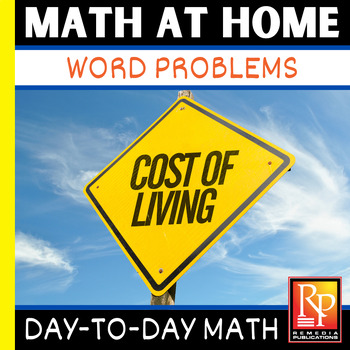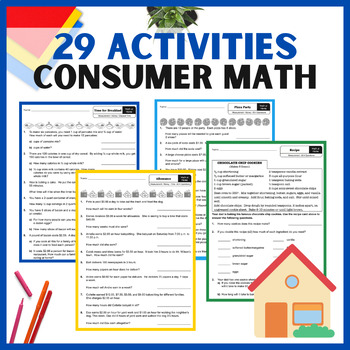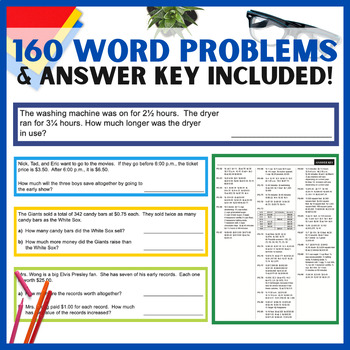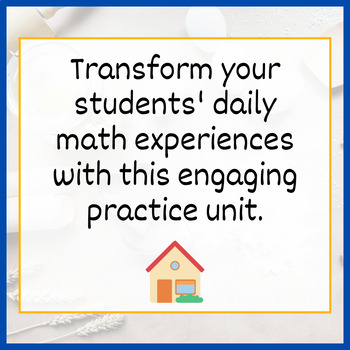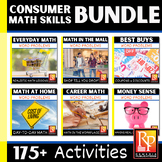CONSUMER MATH AT HOME: Life Skills Word Problems- Cooking, Banking, Elapsed Time
- PDF
- Easel Activity
Also included in
- Life skills such as being able to shop on websites, handling money, budget your money are important in everyday lives. Many of these special education workbooks will be among the most important educational tools for your students that apply to their daily lives. Realistic images make these suitablePrice $345.00Original Price $393.61Save $48.61
- 1,200 Life Skills Math Word Problems in Everyday Life. Consumer Math Bundle | Estimating | Money | Shopping | Making Change | Discounts | Paychecks | Banking | Taxes | Elapsed Time. Math at Home | Math at Work | Everyday Math. These comprehensive lessons offer TONS of mixed practice using additPrice $39.99Original Price $46.82Save $6.83
- Over 1,200 life skills math word problems to improve financial literacy skills. Consumers are presented with real life situations involving shopping, banking, taxes and more. All printable worksheets.Life Skills | Practical Application | Real-Life Math1,200 Life Skills Math Word Problems in EverydPrice $64.95Original Price $97.07Save $32.12
Description
Consumer Math plays a vital role in our lives... every single day. In fact it is so common, that sometimes we don't even realize we are "doing math!" These practical lessons are sure to help students master everyday math skills and help them understand "Why" this math is so important...
Consumer Life Skills | Math Word Problems | Measurement | Money
Fractions | Percents | Cooking | Recipes | Earning Money | Calculating Pay
Banking | Interest | Elapsed Time.
REALISTIC MATH LESSONS:
With these ready-to-use lessons students use basic math skills to understand food labels, follow recipes, cook, do some banking, go on a road trip, earn & spend money, and much more!
MIXED PRACTICE MATH WORD PROBLEMS:
These real-life math word problems feature everyday scenarios. Students must think about each scenario then decide whether to add, subtract, multiply, or divide to solve the problems. Simple fractions & percent computations are also required in some of the exercises.
PROBLEM SOLVING:
While honing math skills, students will enhance their abilities to comprehend, think logically, and make orderly decisions as they complete these lessons.
LESSONS INCLUDE:
- Cooking Breakfast
- Using Recipes:
- Liquid Measurements
- Distance Measurements
- Cooking Measurements - (teaspoon, cup, quart, gallon, ounce, pint, etc)
- Elapsed Time
- Earning Money
- Spending Money
- Calculating Pay
- Ordering Pizza
- Determining Costs
- Using Coupons
- Selling Items at a Garage Sale
- Buying Items around Town / Shopping
- Fractions
- Banking: Earning Interest, Depositing Money, Keeping a Balance
- Paying for Postage
- Mixed Practice: (all 4 operations math word problems)
- Reading Food Labels: determining calories
- Using Charts
- and much more!
Reading Level: 3-4
Interest Level: 4-12
Page Count: 33

